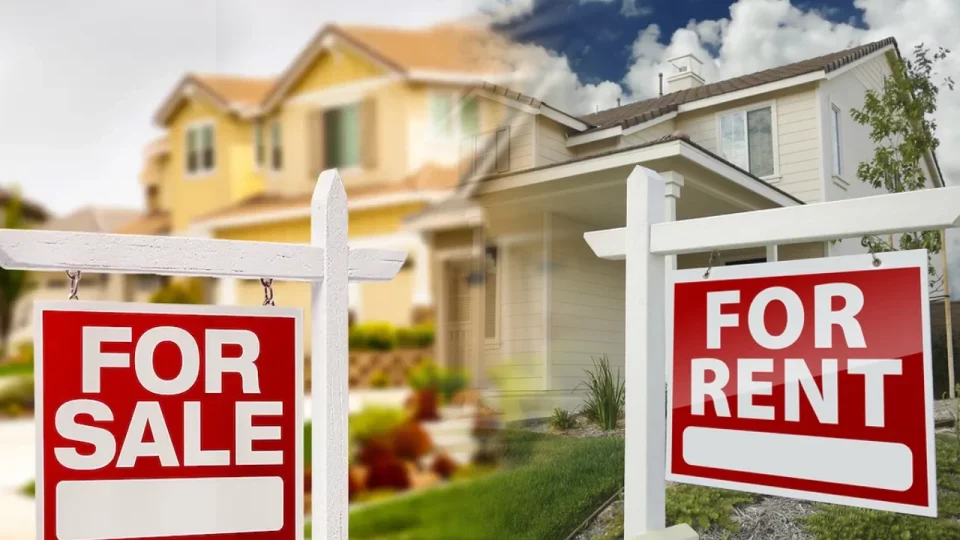Homeownership has long been seen as the cornerstone of the American Dream, representing stability, equity-building, and independence.
However, in recent years, the financial gap between owning a home and renting has widened dramatically, forcing many potential buyers to rethink their housing choices.
Rising costs associated with homeownership, including insurance, maintenance, and soaring mortgage rates, have made owning a home significantly more expensive than renting—a trend that shows no signs of reversing.
Table of Contents
💸 Homeownership Costs Skyrocket: A Historical Perspective
Owning a home has traditionally been more expensive than renting, with an average premium of about 14% when factoring in taxes, insurance, and upkeep. But in today’s market, that premium has exploded to at least 35%, approaching historical highs, according to recent studies by commercial real estate research firms like CBRE and John Burns Research and Consulting.
This significant jump can be attributed to several key factors:
- High Mortgage Rates: Mortgage rates have risen sharply, hovering around 7%, which is nearly double what they were just a few years ago. For buyers to see the cost-benefit alignment of past decades, mortgage rates would need to drop to around 3.5%.
- Soaring Insurance Premiums: Natural disasters, climate change, and inflation have pushed homeowners’ insurance premiums to record levels. In states prone to hurricanes or wildfires, these costs are even higher.
- Maintenance and Taxes: Beyond the initial purchase price, homeowners face regular maintenance expenses and property taxes, which have also climbed due to rising property values.
These factors have driven the costs of homeownership well beyond what many prospective buyers can afford, even as they dream of building equity and escaping rent hikes.
🤝 The Persistent Appeal of Renting
For many Americans, renting has become a more practical and flexible option. Although rents remain elevated compared to pre-pandemic levels, they have not risen as sharply as homeownership costs in recent years. Aggressive apartment construction has helped stabilize rents in some areas, with median rents increasing just 0.2% year-over-year as of October 2023, according to Redfin.
Why Renting Makes Sense for Many:
- Lower Initial Costs: Renting requires far less upfront capital compared to the down payment, closing costs, and additional expenses associated with buying a home.
- Flexibility: Renting allows individuals to move more easily for job opportunities or lifestyle changes without the burden of selling a home.
- Maintenance-Free Living: Renters typically don’t have to worry about expensive repairs or ongoing maintenance, a benefit highlighted by individuals like Savannah West, who moved back to renting after the high costs of home renovation became overwhelming.
Case in Point: The Merino Experience
Take Brooke Merino, a Denver-based sales professional. She recently faced the choice between continuing to rent or stepping into homeownership. While her monthly rental costs were around $2,500, her new mortgage on a $525,000 home amounts to $3,500—a substantial increase. Yet, for Merino, the additional costs are worth it for the space, yard, and sense of stability she gains by owning her own home. Her experience underscores the personal nature of this decision, as well as the financial trade-offs involved.
🔑 Challenges for First-Time Homebuyers
While many renters dream of owning their own homes, the barriers to entry have become daunting, particularly for first-time buyers. The affordability crisis is compounded by a lack of inventory and stubbornly high home prices. Even though mortgage rates have dipped slightly from their 2022 highs, the market remains difficult to navigate.
Real estate agents like Iain Phillips in Orange County, California, witness these challenges firsthand. Many of his clients face monthly housing costs of $4,000 to $4,500 to purchase an entry-level home, compared to $3,000 for a comparable rental. Phillips advises buyers to assess their budgets carefully and ensure they can comfortably manage payments for at least five years.
For those who cannot afford these premiums, the rental market offers a much-needed alternative. In fact, recent surveys from Fannie Mae reveal that 36% of Americans now plan to rent their next home, the highest proportion on record.
⚔️ Buying vs. Renting
The gap between homeownership and renting costs may narrow slightly in the coming years, but experts believe the premium will remain significant. CBRE projects that by the end of 2025, homeownership premiums will settle around 25%, still far above historical norms. High home prices and persistent mortgage rates will continue to limit affordability, even as rental rates gradually rise.
Key Factors Shaping the Market in 2024 and Beyond:
- Mortgage Rates: While rates are expected to decline modestly, they are unlikely to return to the historically low levels seen during the early 2020s.
- Rent Increases: Areas with limited new apartment construction, such as the Northeast and Midwest, may see rents rise faster than the national average.
- Changing Preferences: The convenience and flexibility of renting, especially in urban areas, may shift long-term housing trends as younger generations prioritize lifestyle over equity.
